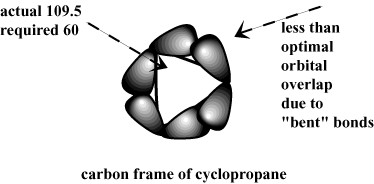Please wait while we process your payment
Please wait while we process your payment
If you don't see it, please check your spam folder. Sometimes it can end up there.
If you don't see it, please check your spam folder. Sometimes it can end up there.
Please wait while we process your payment

By signing up you agree to our terms and privacy policy.
Don’t have an account? Subscribe now
Create Your Account
Sign up for your FREE 7-day trial
By signing up you agree to our terms and privacy policy.
Already have an account? Log in
Your Email
Choose Your Plan
Individual
Group Discount
Save over 50% with a SparkNotes PLUS Annual Plan!
 payment page
payment page
Purchasing SparkNotes PLUS for a group?
Get Annual Plans at a discount when you buy 2 or more!
Price
$24.99 $18.74 /subscription + tax
Subtotal $37.48 + tax
Save 25% on 2-49 accounts
Save 30% on 50-99 accounts
Want 100 or more? Contact us for a customized plan.
 payment page
payment page
Your Plan
Payment Details
Payment Summary
SparkNotes Plus
You'll be billed after your free trial ends.
7-Day Free Trial
Not Applicable
Renews July 21, 2025 July 14, 2025
Discounts (applied to next billing)
DUE NOW
US $0.00
SNPLUSROCKS20 | 20% Discount
This is not a valid promo code.
Discount Code (one code per order)
SparkNotes PLUS Annual Plan - Group Discount
Qty: 00
SparkNotes Plus subscription is $4.99/month or $24.99/year as selected above. The free trial period is the first 7 days of your subscription. TO CANCEL YOUR SUBSCRIPTION AND AVOID BEING CHARGED, YOU MUST CANCEL BEFORE THE END OF THE FREE TRIAL PERIOD. You may cancel your subscription on your Subscription and Billing page or contact Customer Support at custserv@bn.com. Your subscription will continue automatically once the free trial period is over. Free trial is available to new customers only.
Choose Your Plan
This site is protected by reCAPTCHA and the Google Privacy Policy and Terms of Service apply.
For the next 7 days, you'll have access to awesome PLUS stuff like AP English test prep, No Fear Shakespeare translations and audio, a note-taking tool, personalized dashboard, & much more!
You’ve successfully purchased a group discount. Your group members can use the joining link below to redeem their group membership. You'll also receive an email with the link.
Members will be prompted to log in or create an account to redeem their group membership.
Thanks for creating a SparkNotes account! Continue to start your free trial.
We're sorry, we could not create your account. SparkNotes PLUS is not available in your country. See what countries we’re in.
There was an error creating your account. Please check your payment details and try again.
Please wait while we process your payment

Your PLUS subscription has expired
Please wait while we process your payment
Please wait while we process your payment

Introduction to Cycloalkanes
One early explanation given for the relative lack of ring strain in cyclopentane and cyclohexane invokes the geometry of sp3-hybridized carbons. The natural bond angle at sp3-hybridized carbons is 109.5 degrees. However, in order to accommodate the geometry of cycloalkanes these bond angles are forced into other angles, resulting in angle strain. For instance, the large amount of ring strain in cyclopropane can be explain by the large deviance of the required 60 degree bond angle from 109.5. Instead of forming direct head-on overlaps, the C-C σ bonds of cyclopropane are bent out of linearity, resulting in less stable interactions.

While this simple model of angle strain explains some of the trends in ring strain, it fails to address others. For instance, the 90 degree bond angles of cyclobutane are much closer to 109.5 than the 60 degree bond angles of cyclopropane, yet its ring strain is smaller by a mere 1 kcal/mol. Most important of all, however, is that this model predicts that cyclopentane, with bond angles of 108 degrees, should be the most stable of the cycloalkanes. This is not the case. In fact, cyclohexane is the most stable of the series with no ring strain. As we'll see in the next section, the dilemma of cyclohexane can be resolved using conformational analysis.
Please wait while we process your payment
